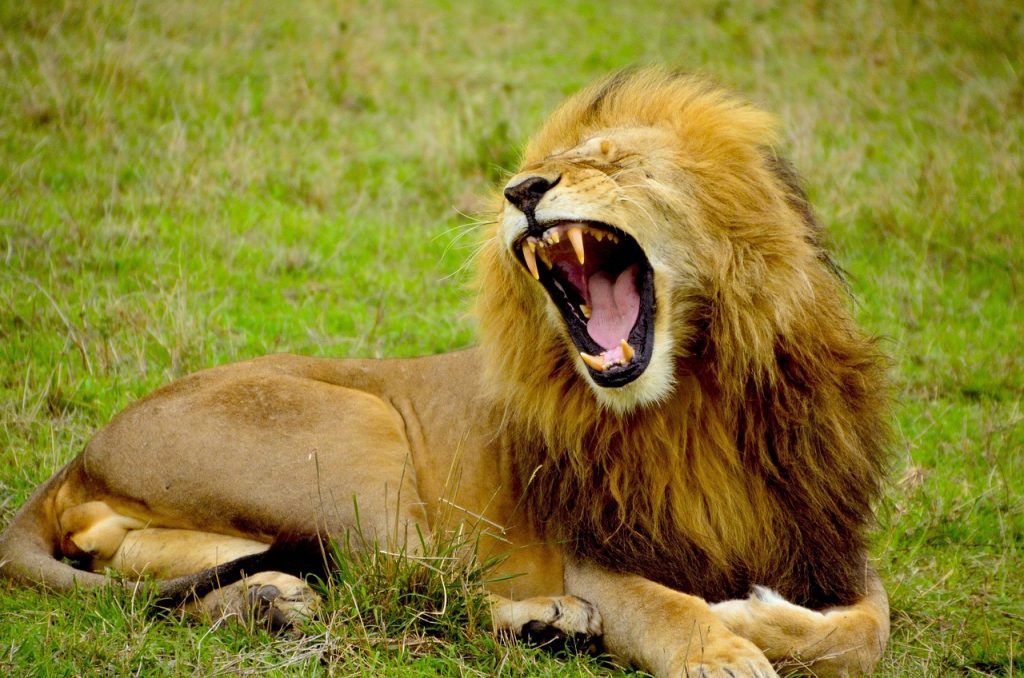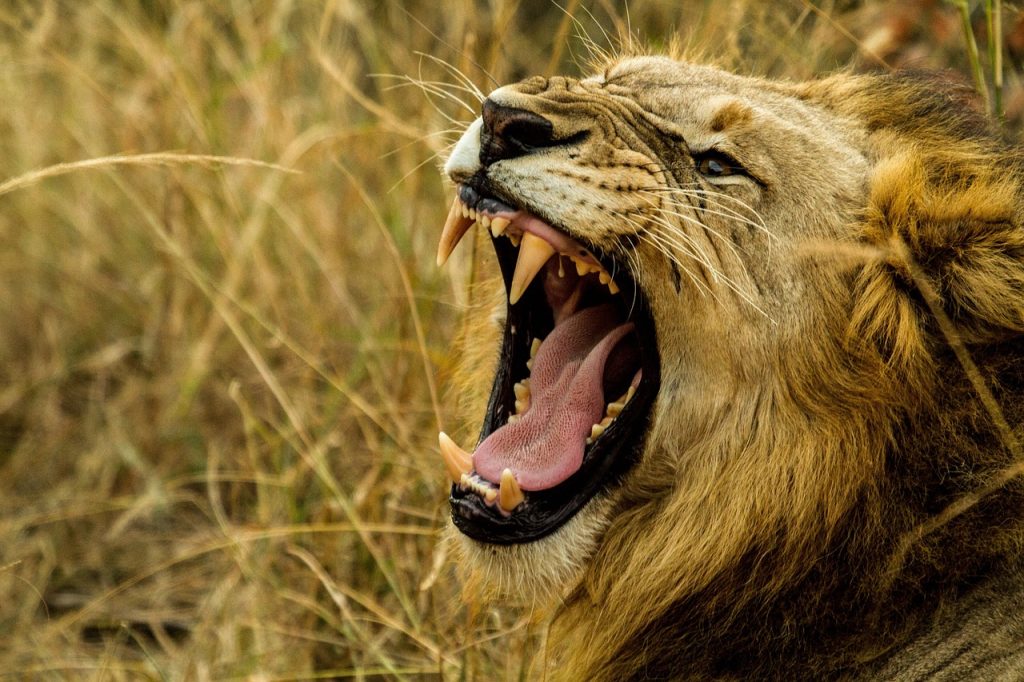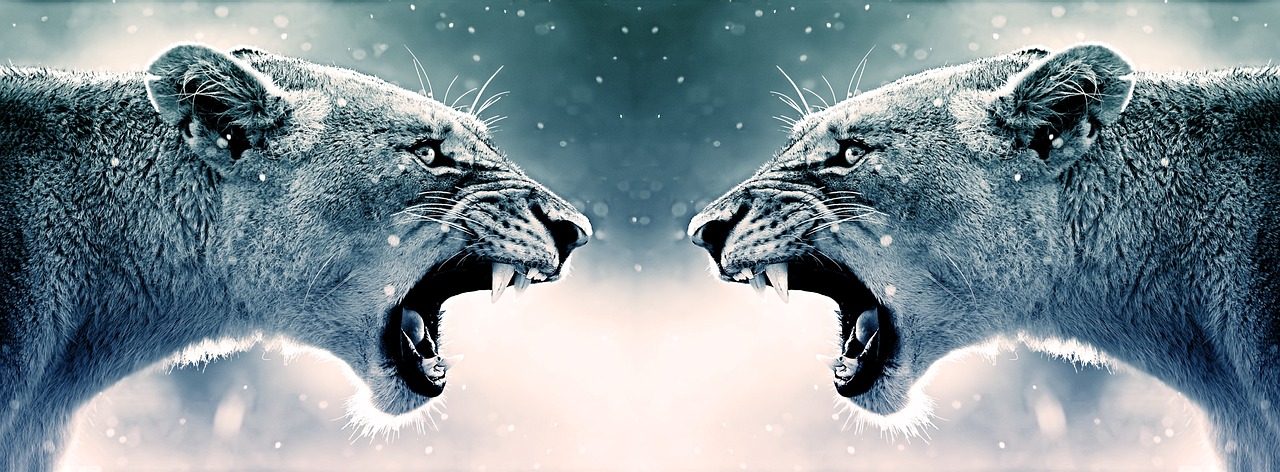You’ve just stumbled upon a fascinating article that is all about unlocking the secrets behind one of nature’s most majestic and powerful sounds – the lion’s roar. In “Understanding The Lion’s Roar: Expert Insights And Explanations,” you’ll be taken on an exciting journey where experts delve into the depths of this iconic vocalization, providing intriguing insights and detailed explanations that unveil the true significance of the lion’s roar. So sit back, relax, and get ready to be enthralled by the captivating world of the king of the jungle.

The Nature of the Lion’s Roar
The Lion’s Roar is a distinctive vocalization that is synonymous with the image and reputation of the mighty lion. It is a powerful and deep sound that reverberates across the vast African savannah. This iconic roar is often associated with strength, dominance, and primal power.
Key Characteristics of the Lion’s Roar
The Lion’s Roar is characterized by its intensity and low frequency. It is a long, deep, and resonating sound that can be heard from miles away. Lions have a specialized larynx and vocal cords that allow them to produce such a powerful and far-reaching roar. This roar is unique to male lions, although female lions can also exhibit a softer version of the roar.
The Purpose and Function of the Lion’s Roar
The Lion’s Roar serves several crucial purposes in a lion’s life. One of the primary functions is communication. Lions use their roar to communicate with other members of their pride, conveying various messages such as territory marking, social cohesiveness, and warnings to potential intruders. The roar also plays a significant role in asserting dominance and establishing a lion’s status within the pride hierarchy. Additionally, the roar has a vital function in mating behavior, attracting females and signaling male fitness and strength.
Scientific Viewpoints on the Lion’s Roar
Evolutionary Origins of the Roar
Scientists believe that the lion’s roar has evolutionary origins dating back millions of years. It is thought to have developed as a result of natural selection for communication within a social group. Lions form complex social structures, and the roar helps them maintain social cohesion and coordinate their actions effectively.
Physiological Mechanisms Involved
The lion’s roar is made possible by the specialized anatomy of their vocal apparatus. Their enlarged larynx, longer vocal folds, and strong chest muscles all contribute to the production of the powerful roar. These adaptations allow male lions to produce low-frequency sounds that carry over long distances. The respiratory system also plays a crucial role, as lions take in a large volume of air to fuel their roaring abilities.
Roaring Behavior in Different Lion Species
While the lion’s roar is most commonly associated with the African lion (Panthera leo), other lion species, such as the Asiatic lion (Panthera leo persica) and the critically endangered Barbary lion (Panthera leo leo), also exhibit similar roaring behavior. The slight variations in the roar patterns among these species provide insights into their evolutionary divergence and adaptations to different environments.

Cultural and Symbolic Significance
Lion’s Roar in Mythology and Folklore
The lion’s roar holds great cultural and symbolic significance in various societies around the world. In many African cultures, the roar represents power, courage, and kingship. It often features prominently in myths and folklore, where lions are revered as symbols of strength and as guardians. The roar’s thunderous sound is believed to carry mystical qualities and is associated with gods and spirits.
Roaring as a Display of Power and Dominance
In addition to its cultural symbolism, the lion’s roar serves as a powerful display of dominance and intimidation. The volume and intensity of the roar can convey the lion’s strength and assertiveness to both rivals and potential mates. The ability to emit such a robust sound is seen as a key attribute of the alpha male, and it helps maintain order within the pride hierarchy.
Representations of the Lion’s Roar in Art and Literature
Throughout history, the lion’s roar has inspired countless artistic interpretations. It has been depicted in sculptures, paintings, literature, and even in modern media. Artists often use the roar as a metaphor for courage, leadership, and the triumph of the human spirit. This rich artistic representation further emphasizes the lion’s roar as a symbol of power and resilience.
Communication and Social Context
Roaring as a Form of Intraspecific Communication
The lion’s roar plays a vital role in establishing and maintaining communication within a pride. When a lion roars, it sends signals to other members of the pride regarding their location, emotions, and intentions. The varying pitch, duration, and intensity of the roar convey different messages, allowing lions to coordinate their movements, express emotions, and maintain social bonds.
Roaring as Territory Marking
One of the key functions of the lion’s roar is to mark and defend territory. By emitting a powerful roar, lions proclaim ownership over their hunting grounds and discourage rival prides or intruding individuals from encroaching. The deep resonance of the roar can carry across long distances, effectively notifying others of the pride’s presence and asserting their territorial boundaries.
Social Dynamics Within Lion Groups
The lion’s roar plays a significant role in establishing and maintaining social dynamics within a pride. Dominant males often use their roar to assert their authority and establish their position at the top of the hierarchy. Subordinate males and females may respond with submissive vocalizations, demonstrating respect and acknowledging the dominant individual. The roar also helps enforce cohesion and cooperation within the pride, coordinating activities such as hunting and defense.

Acoustic Characteristics
Sound Production Mechanisms
The lion’s roar is produced when air is forced through the vocal cords, causing them to vibrate. This vibration generates sound waves that are amplified by the resonating chambers in the lion’s throat and mouth. The shape and size of these chambers contribute to the unique deep and thunderous quality of the roar.
Frequency and Vibration Patterns
The lion’s roar is characterized by low-frequency sound waves, typically ranging from 20 to 50 hertz. The vibrations produced by the roar can be felt not only by other lions but also by prey animals and potential rivals nearby. The intensity and duration of the roar can vary depending on the lion’s emotional state, physical condition, and the purpose of their vocalization.
Variations in Roaring Sounds Across Individuals
While the lion’s roar is a distinct vocalization, there are variations in sound patterns and characteristics among individuals. Factors such as age, sex, and physical condition can influence the pitch, volume, and quality of the roar. Younger males may have less-developed vocal apparatus and produce weaker roars compared to their older, more dominant counterparts. These variations in vocalizations among individuals contribute to the overall social dynamics within the pride.
Emotional and Psychological Factors
Role of Roaring in Emotional Expression
The lion’s roar is not only a means of communication but also an expression of emotions. Lions may roar to convey their emotional state, such as excitement, frustration, or distress. A roaring lion can communicate aggression, fear, or territorial assertiveness, providing valuable information to other members of the pride and potential rivals.
Stress and Aggression-related Roaring
In stressful or confrontational situations, lions may engage in heightened roaring behavior as a form of aggression or defense. Roaring can serve as a warning to intruders or rival males to keep their distance or face a potential confrontation. The heightened intensity and frequency of the roar in such situations reflect the lion’s heightened arousal and readiness to defend themselves and their pride.
Roaring as a Reflex and Defense Mechanism
Roaring also serves as a defensive mechanism for lions. When startled or threatened, lions may instinctively emit a roar to startle or intimidate their potential attackers. The sudden and powerful sound can startle predators or prey, providing the lion with a momentary advantage and allowing them to regain control of the situation.

Role in Reproduction and Mating Behavior
Roaring as a Female Attraction Signal
The lion’s roar plays a significant role in attracting females during mating season. Male lions roar to broadcast their presence, strength, and fitness to potential mates. The intensity and power of the roar are associated with the lion’s ability to protect and provide for the female and their offspring. Females are often attracted to males with powerful roars, as it signifies their dominance and genetic quality.
Roaring as a Sign of Male Fitness
The roar also serves as an indicator of a male lion’s overall fitness and reproductive success. A strong, deep roar suggests a robust physical condition and high testosterone levels, both of which are desirable traits in a potential mate. Male lions with weaker or less impressive roars may face difficulties in attracting mates or may be perceived as less capable of defending their pride.
Competitive Roaring Among Males
Male lions engage in roaring contests to assert dominance and establish their place in the social hierarchy. These contests involve responding to each other’s roars with increasingly powerful and intense vocalizations. The male with the most powerful and intimidating roar often emerges as the dominant male, earning the right to mate with females within the pride and ensuring their genetic legacy.
Impact of Environmental Factors
Influence of Habitat and Vegetation on Roaring
The habitat and vegetation within a lion’s territory can influence their roaring behavior. Dense vegetation may obstruct the sound waves produced by the roar, reducing its carrying distance and effectiveness as a communication tool. In open grasslands or savannahs, where sound can travel more easily, lions may rely more heavily on their roar to convey messages and assert their presence.
Geographical Variations in Roaring Behavior
Different lion populations across Africa and Asia have distinct roaring behaviors, influenced by geographical factors, including climate, landscape, and prey availability. Lions living in more densely populated areas may exhibit less frequent or less intense roaring behavior due to increased competition and the need to remain inconspicuous. Conversely, lions inhabiting remote and less populated regions may engage in more frequent or prolonged roaring to announce their territories.
Climate and Seasonal Effects on Roaring
Seasonal variations can also impact the roaring behavior of lions. During times of scarcity, such as the dry season when prey is scarce, lions may roar more frequently to signal their presence, assert their dominance, and potentially attract wandering females. Climate factors, such as temperature and humidity, can also influence the acoustic properties of the roar, affecting its carrying distance and overall effectiveness as a communication tool.

Conservation and Threats to Roaring
Human Activities and the Decline of Roars
Lion populations worldwide face numerous threats, many of which impact their ability to roar. Habitat loss, fragmentation, and human-wildlife conflicts disrupt the natural social dynamics and communication within lion prides. Illegal hunting, poaching, and the illegal wildlife trade also contribute to the decline of lion populations and disrupt the balance of social cohesion and communication within these groups.
Protective Measures and Conservation Efforts
Conservation organizations and governments have recognized the importance of protecting lions and their unique vocalizations. Efforts to combat habitat loss, promote sustainable land use practices, and reduce poaching are crucial in ensuring the survival of lion populations. Conservation initiatives often include measures to protect the natural habitats of lions, establish protected areas, and raise awareness among local communities about the importance of lion conservation.
Implications for Lion Populations
The decline of lion populations and the disruption of their vocal communication have profound implications for their survival and overall ecological balance. Lions play a vital role in ecosystems as apex predators, regulating prey populations and maintaining biodiversity. The loss of roars and the social dynamics they facilitate can lead to decreased reproductive success, weakened genetic diversity, and a decline in the overall fitness and resilience of lion populations.
Future Research and Areas of Exploration
Unanswered Questions and Research Gaps
While significant progress has been made in understanding the lion’s roar, many questions remain unanswered. Future research could explore the acoustic properties of the roar in greater detail, investigating how environmental factors, individual characteristics, and social dynamics influence its structure and function. Additionally, studying the role of the roar in non-auditory communication channels, such as visual and olfactory cues, could provide further insights into the complexity of lion vocalizations.
Technological Advances and Roar Analysis
Advancements in technology, such as bioacoustic monitoring devices and sound analysis software, offer promising avenues for studying the lion’s roar in greater detail. These tools enable researchers to collect and analyze large datasets of acoustic information, allowing for a more comprehensive understanding of the lion’s vocalizations and their ecological significance. Continued technological innovations in this field hold immense potential for future discoveries.
Interdisciplinary Approaches to Lion Vocalization Study
The study of the lion’s roar can benefit from interdisciplinary collaborations between biologists, ecologists, anthropologists, linguists, and experts in acoustic communication. By combining knowledge and methodologies from diverse fields, researchers can deepen their understanding of the lion’s vocalizations, their cultural and ecological importance, and their place in the broader context of animal communication. This interdisciplinary approach will promote a holistic understanding of lion vocalizations and contribute to their conservation and protection.

